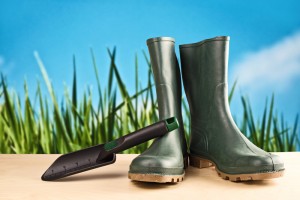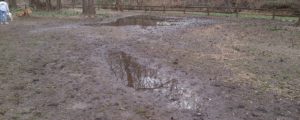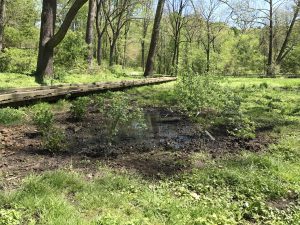Every June, we cut down invasive Japanese Knotweed in a three day Anti Knotweed Extravaganza. Wear long pants, long sleeves and gardening gloves for protection against poison ivy, and join us! Water and Kind Bars will be provided.

Every June, we cut down invasive Japanese Knotweed in a three day Anti Knotweed Extravaganza. Wear long pants, long sleeves and gardening gloves for protection against poison ivy, and join us! Water and Kind Bars will be provided.


Every June, we cut down invasive Japanese Knotweed in a three day Anti Knotweed Extravaganza. Wear long pants, long sleeves and gardening gloves for protection against poison ivy, and join us! Water and Kind Bars will be provided.
Every June, we cut down invasive Japanese Knotweed in a three day Anti Knotweed Extravaganza. Wear long pants, long sleeves and gardening gloves for protection against poison ivy, and join us! Water and Kind Bars will be provided.
 We will plant buttonbushes and blue flag irises in one of the low lying areas of the park toward the creek. If you’d like to help, bring gloves and a trowel if you have them. Water and Kind bars will be provided to fuel the volunteers. If the plants are happy we will reduce mud and add beauty and wildlife habitat to our park!
We will plant buttonbushes and blue flag irises in one of the low lying areas of the park toward the creek. If you’d like to help, bring gloves and a trowel if you have them. Water and Kind bars will be provided to fuel the volunteers. If the plants are happy we will reduce mud and add beauty and wildlife habitat to our park!
Note: After the planting, the Township will install temporary fencing to keep the new plantings safe while they get established.
Our Annual Meeting will begin with a short report on events and accomplishments in 2017 and plans for 2018. Next, Tom Brightman, Land Stewardship Manager for Longwood Gardens, will give a talk on West Mill Creek Park: an Ecological Perspective. Tom grew up in the area and spent a lot of time at West Mill Creek Park as a boy. He will discuss the history and current state of the the Mill Creek watershed and explain why riparian buffers and woodland corridors benefit both humans and wildlife. He will also discuss stewardship techniques to keep our park healthy while blending human, canine, and ecological needs in the landscape.
Orsi Lazar, expert gardener and principal of Learn.Do.Thrive, will teach us good pruning techniques using our Wildlife and Respite Garden shrubs as subjects. Don’t worry if you don’t know much about pruning–Orsi is there to help. Here is a great chance to help keep our West Mill Creek wildlife garden in good shape and learn at the same time. You can use your newfound skills on your own shrubs at home!
 Once again this year, Santa Paws will come to our park! Bring your dog for a photo with Santa. Santa will give your dog a biscuit while you enjoy some hot cocoa. This is a fundraiser for pets who lost their homes during the recent hurricanes, so 100% of donations collected at this event will go to this worthy cause.
Once again this year, Santa Paws will come to our park! Bring your dog for a photo with Santa. Santa will give your dog a biscuit while you enjoy some hot cocoa. This is a fundraiser for pets who lost their homes during the recent hurricanes, so 100% of donations collected at this event will go to this worthy cause.

We invite all members to help plant bog-loving shrubs in the low lying area of the park known to many of us as “The Lake”. If these plants take hold and grow, they will add beauty and wildlife value to the park and keep muddy paws to a minimum at the same time. And if you can’t participate in the work day, just send encouraging thoughts toward our new plantings, and keep your dog from trampling them if at all possible. (picture, right, shows the sea of mud and standing water pre-planting.)
 2017 Friends of West Mill Creek Park Survey Results
2017 Friends of West Mill Creek Park Survey Results
MUD
Member survey comments: “Try to keep the park from having “mud pits” near boardwalk and between bench and entrance to creek.” ** “Get rid of the mud!” ** “More planting in center area to prevent “mudholes”—and would love more shrubbery to attract birds.”
Our response: Our number one priority is trying to address the mud in a way that benefits both ecological and practical concerns.
We have begun our campaign to reduce mud in an ecologically friendly way begun by planting bog-tolerant shrubs around the mud hole near the long boardwalk. If the shrubs grow and flourish, they should keep the dogs out of the water. We intend to keep on planting with the goal of providing food and cover to wildlife while keeping our dogs cleaner. Please note that we are moving ahead with this project in small increments rather than a mass planting effort all at once because these are difficult planting conditions and we expect to learn a lot by trial and error.
We hope you will understand that our park is in a floodplain, and part of its important ecological function is to absorb and filter storm water before it reaches the creek. Also, the seasonal pools of standing water are necessary to the reproduction of park amphibians, which in turn help control insect populations. Therefore, diverting all storm water directly into Mill Creek so that the park is always dry underfoot is not one of our goals; rather, we will try to strike a happy medium between ecological and practical concerns.
TRAILS
Member survey comments: “The stone pathways are not holding up. The wooden walkway is much better. Either extend the wooden walkway all the way round or add stone/metal/plastic frames for the gravel portion and add more gravel.” ** “Finish covering larger stones on path with small stones to protect dogs’ paws.”
Our Response: Parks & Rec tells us that extending the wooden walkway around the park is not practicable because of the high groundwater levels. Containing the gravel by adding frames is not a viable solution either. Because of the high volume of water runoff that flows over the park, the gravel moves, either burying the frame and making it useless, or leaving the frame projecting out of the ground which creates a tripping hazard. Similarly, finishing off the rocky part of the path is not an option. Parks & Rec has tried to do this kind of project in the past. They have found that the fine finishing gravel (which works pretty well on the flat parts of the path) isn’t effective on the sloping paths. It gets carved into gullies and then ultimately washes away.
SEATING
Member survey comments: “A bench down near beach spot past the weed penitentiary area. A lot of people come down there to let dogs swim – maybe 2 rustic log-type benches. There is plenty of room.”
Our response: Great idea! We are currently discussing this with Parks & Rec.
PARKING
Member survey comment: “Marking of parking spaces in the lot to maximize the number of cars.”
Our response: Great idea! We are currently discussing this with Parks & Rec.
SAFETY FENCING
Member survey comments: “I would like more money spent on enclosing the area. My dogs are ok but friends won’t come because they do not feel the property is secure.” ** “We have heard there’s a hole in stone wall that dogs can get through. Can this get checked out and repaired?”
Our response: We are very supportive of all reasonable measures to improve safety. We are currently looking at the possibility of some additional fencing and/or the planting of shrub hedges in areas of particular concern. However, it is important for everyone to understand that it not possible to enclose the park completely. Fencing cannot be installed either across the stream or in the area where the stream may flood while carrying debris. West Mill Creek Park is suitable only for those dogs whose owners can trust them off leash. A completely fenced area is available at Rolling Hill Park for dogs with less reliable recall skills.
As far as a hole in the stone wall, we aren’t aware of one, though there was an opening between the fence and stone wall that has been dealt with by the independent efforts of one of our members.
WATER QUALITY
Member survey comment: “Periodic checks of creek’s toxicity.”
Our response: We spoke to the Department of Parks and Recreation and the Lower Merion Conservancy about this concern. The Lower Merion Conservancy monitors water quality in our stream monthly for indications of ecological stream health such as levels of dissolved oxygen and number of macro invertebrates living in the stream. The state department of natural resources also monitors for stream health from time to time. Tom Clark, Conservation Coordinator at the Lower Merion Conservancy, offered the opinion that the stream, while polluted from the point of view of ecological stream health, is not necessarily detrimental to dog health. He also noted that if we observe a “fish kill” (numerous fish floating on the surface) that is an indication of toxicity that definitely would be of concern for canine health. Finally, he noted that pollution levels are highest during and just after storms with lots of runoff entering the creek.
Mill Creek water is not safe for human consumption. No one we talked to is aware of any particular test for toxicity to dogs, but many of our canine dog park regulars have been drinking the water for their entire lifetimes with no apparent ill effects. If you are concerned, we suggest discussing this issue with your veterinarian.
To keep our stream (and all waterways in Lower Merion) as clean as possible, remember that chemical lawn fertilizers, pesticides, pollutants from cars, de-icing salt and yes, dog poop, are the most significant sources of stream pollution in our area. Dispose of all dog poop in the trash, and use chemical fertilizers, pesticides, and de-icing salt as little as possible (none at all would be great!)
Member survey comment: “Some people do not clean up after their dogs. I’ve heard people say – “It’s not on the path” – but they need to clean up anywhere in the park including sides and middle.”
Our response: You are so right! Dog poop is a major source of stream pollution and threatens the health of people and animals that use the stream. We hope all West Mill Creekers will take a look at our “Poop FAQs” sheet that is available on our website under the “Gettin’ Along” tab and in brochure form in the park kiosk. It answers a lot of the questions people have asked us in the past on this issue so please take a look!
AESTHETICS
Member survey comment: “Irises along the edge of the stream.”
Our response: Irises would be lovely! We are discussing feasibility with the member who suggested this.
Member comments: “Love the way the Respite Garden has filled out! Love the improved walking area—reduced mud and mud puddles.” **“You are doing a wonderful job!” ** “The Park looks beautiful!” ** “Thanks for all you do!” **“Thank you and our leadership for helping make the dog park a memorable part of our lives.” ** “You are doing a great job!!” ** “Thank you for everything you do for the park and for building community in our area!” ** “ No dog but I love the dog park. You have done an awesome job!”
Our response: Positive feedback is extremely encouraging and energizing to all on the Steering Committee. We thank all those volunteers and contributors who have helped make this happen and we also thank our survey respondents for the supportive comments on our efforts—we really appreciate it!
THANKS TO ALL WHO PARTICIPATED FOR RESPONDING TO OUR 2017 SURVEY!
Bad news first: As some of you know, a few days ago in the early afternoon, thieves smashed the window of a car parked in our Friends of WMC parking lot and stole a purse and cellphone. So, do be careful! (The advice of our police department is: if you must bring valuables to the park, try to take them with you or keep them out of sight.)
Now for some happier news:

Newly planted bog hedge, April 2017
WMC volunteers began work on our plan to plant bog-loving shrubs in or around low-lying areas in the main park. If the new plants thrive we will reduce our muddy-dog quotient while improving the park ecology. Our first set of shrubs (pussywillow, itea virginica, and summersweet) is planted around the notable mud hole near the long boardwalk. Please wish our new shrubs health and long life, and do try to steer your dogs away from them while they are getting established if you can!

Judy, Ellen R, Ellen B, and Karen H with canine supervisors Brodie and Lizzie
In addition, our April 15 Wildlife and Respite Garden work day resulted in major gains in our battle against the weeds — also a lot of fun. Later we planted a large number of Black Eyed Susans to brighten up the Wildlife Garden in midsummer.
Notifications